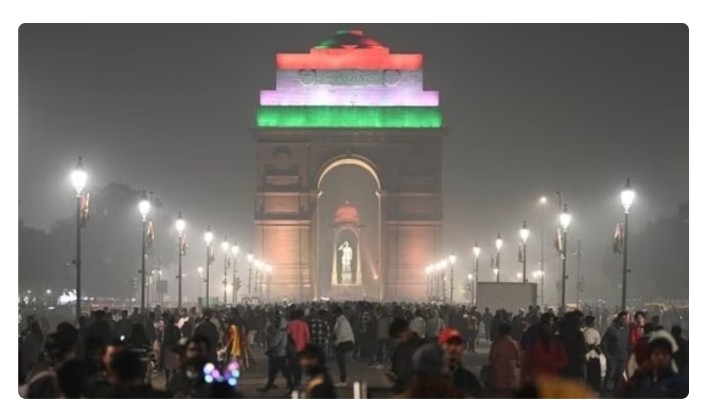The city continues to battle these dangerous levels of pollution...
Delhi woke up to another day of hazardous air quality on Wednesday, with the Air Quality Index (AQI) crossing 440—classified as the ‘severe’ category—by 7 am. The city remains under Stage 4 of the anti-pollution measures outlined in the Graded Response Action Plan (GRAP).
At 7 am, Delhi's overall AQI was recorded at 442, but several monitoring stations reported even worse conditions, falling into the ‘severe-plus’ category.
Out of 37 monitoring stations listed on the Sameer app, which provides real-time updates on air quality, 21 stations recorded AQI levels in the ‘severe-plus’ range as of Tuesday morning. The most alarming readings were reported at Nehru Nagar (480), Alipur (471), Anand Vihar (481), CRRI Mathura Road (468), Jahangirpuri (468), and Rohini (466).
According to the Central Pollution Control Board (CPCB), AQI levels are categorized as follows: 0-50 is considered “good,” 51-100 “satisfactory,” 101-200 “moderate,” 201-300 “poor,” 301-400 “very poor,” 401-450 “severe,” and anything above 450 falls under the “severe-plus” category. The last time Delhi’s AQI entered this critical range was in mid-November.
In response to the alarming spike in pollution levels, authorities reinstated Stage 4 of GRAP on Monday night. This phase includes strict measures like halting construction activities and banning the entry of trucks into the city.
Experts attribute the sudden surge in pollution to a sharp decline in wind speeds, which has caused local pollutants to accumulate in the atmosphere. During winter, Delhi enforces GRAP restrictions, which classify air quality into four stages: Stage I (Poor, AQI 201-300), Stage II (Very Poor, AQI 301-400), Stage III (Severe, AQI 401-450), and Stage IV (Severe Plus, AQI above 450).
The city continues to battle these dangerous levels of pollution, raising serious health concerns for its residents.




The Brief. Sign up to receive the top stories you need to know right now.